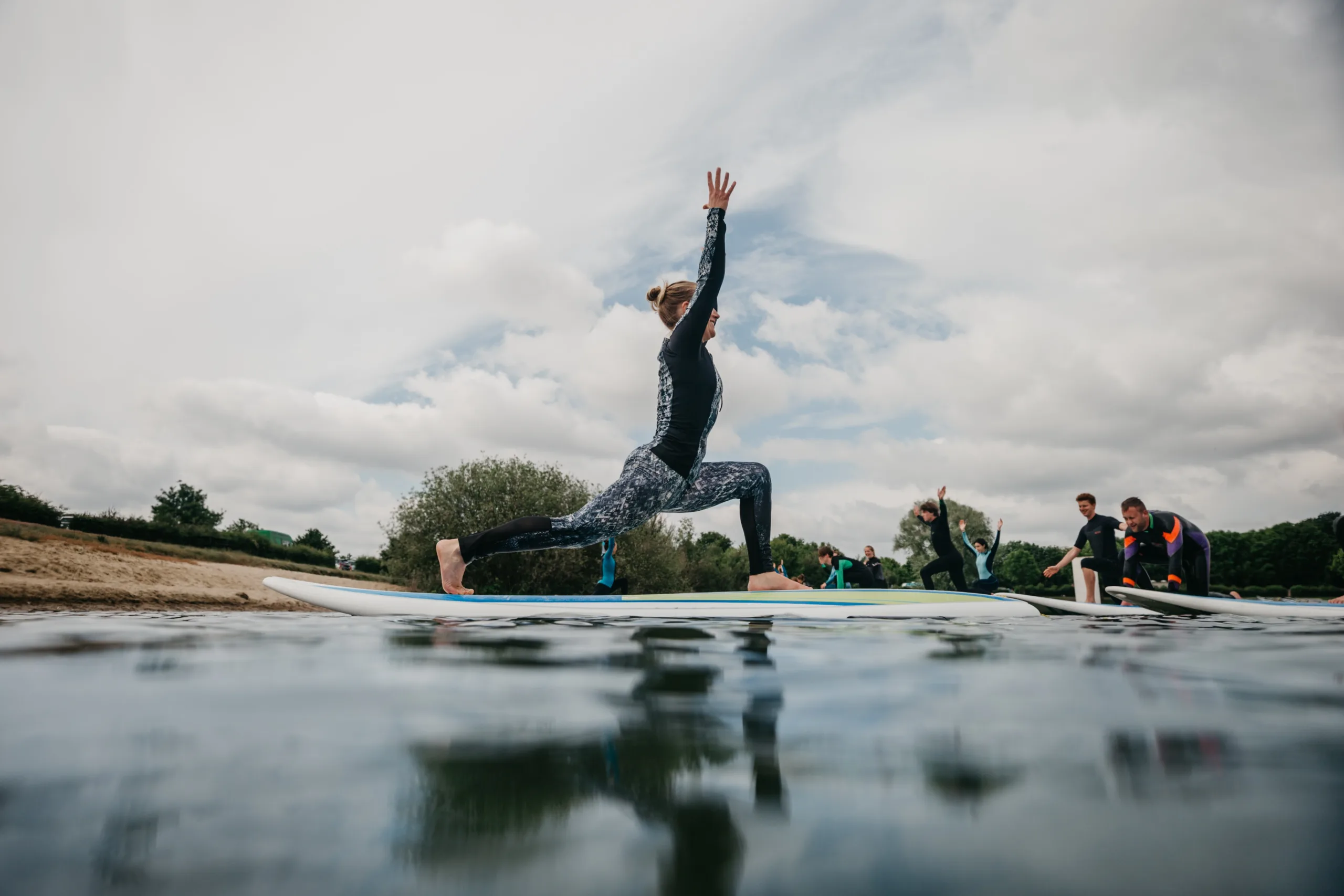What is SUP Yoga: Exploring the Benefits and Challenges of Stand-Up Paddleboard Yoga
Introduction
Imagine practicing yoga on a paddleboard, surrounded by the soothing sounds of water and the warmth of the sun. That’s the essence of SUP yoga, a growing trend that combines traditional yoga poses with the adventure of stand-up paddleboarding. In this article, we’ll explore what SUP yoga is all about, the benefits it offers, and what makes it a unique and exhilarating experience.
Click here for more
What is SUP Yoga?
SUP yoga, short for stand-up paddleboard yoga, is a fusion of two activities: stand-up paddleboarding and yoga. It involves practicing traditional yoga poses and sequences while balancing on a paddleboard in a body of water, such as a calm lake, river, or ocean. SUP yoga adds an exciting and dynamic element to the practice, requiring practitioners to engage their core muscles for stability and adapt their practice to the moving platform.
Is SUP Yoga Hard?
The level of difficulty in SUP yoga varies depending on factors such as your experience with yoga and paddleboarding, the conditions of the water, and your comfort level on the paddleboard. For beginners, It can present additional challenges in terms of balance and stability. However, with guidance from a qualified instructor and consistent practice, most individuals can adapt and find their balance on the paddleboard. Like any form of yoga, SUP yoga becomes easier with time, practice, and a willingness to embrace the process.
Why is SUP Yoga Good?
1. Enhances Core Strength and Stability
SUP yoga engages the core muscles to maintain balance and stability on the paddleboard. The continuous adjustments required to stay aligned in yoga poses build strength and toning in the core, resulting in improved stability both on and off the paddleboard.
2. Heightens Mind-Body Connection
The dynamic nature of SUP yoga, where you’re constantly adjusting to the movement of the water, deepens the mind-body connection. Balancing on the paddleboard demands present-moment awareness, concentration, and focus, bringing a heightened sense of mindfulness to your practice.
3. Increases Full-Body Strength and Flexibility
The act of paddling and transitioning between yoga poses on a paddleboard engages various muscle groups, leading to a full-body workout. Over time, SUP yoga can improve overall strength, flexibility, and endurance, as it challenges you to maintain balance while performing yoga poses in an unstable environment.
4. Connects with Nature and Provides Stress Relief
Being out in nature, surrounded by water and fresh air, can have a calming and grounding effect on the mind and body. SUP yoga allows you to connect with the natural elements, promoting relaxation, stress reduction, and a sense of well-being.
What is a SUP Workout?
A SUP workout refers to engaging in stand-up paddleboarding as a form of exercise. In a SUP workout, you paddle on the board, utilizing the core, back, and arm muscles for propulsion. Paddling on calm water provides a low-impact cardiovascular workout, enhancing endurance and overall fitness. SUP yoga can be considered a combination of a SUP workout and a yoga practice, offering the physical benefits of both activities.
What is a SUP?
A SUP, or stand-up paddleboard, is a large board similar to a surfboard but wider and more stable. It is specifically designed for stand-up paddleboarding, where you use a paddle to propel yourself through the water while standing on the board. SUPs are typically made of durable materials such as fiberglass, epoxy, or inflatable materials for portability. They come in various sizes and shapes to accommodate different skill levels and water conditions.
Frequently Asked Questions (FAQs)
Q: Do I need prior experience in paddleboarding or yoga to try SUP yoga?
No prior experience is necessary to try SUP yoga. However, some familiarity with yoga poses and basic paddleboarding skills can be beneficial. It’s recommended to start with a beginner-friendly class or seek guidance from a qualified instructor who can provide proper instruction and support.
Q: Can I practice SUP yoga if I’m not a strong swimmer?
While basic swimming skills can be helpful for safety, it is not a requirement for SUP yoga. Most classes take place in shallow water, and participants wear personal flotation devices (PFDs) for added security. It’s important to communicate any concerns or limitations to the instructor before the class.
Q: What should I wear for SUP yoga?
When practicing SUP yoga, it’s best to wear comfortable, moisture-wicking clothing that allows for a full range of motion. Consider wearing a swimsuit or yoga attire that you don’t mind getting wet. Additionally, don’t forget to apply sunscreen and bring a hat or sunglasses for sun protection.
Conclusion
SUP yoga offers a unique and exhilarating way to connect with nature, challenge yourself physically and mentally, and deepen your yoga practice. Through the combination of stand-up paddleboarding and yoga, you can enhance core strength, increase body awareness, and experience a sense of tranquility on the water. Whether you’re a seasoned yogi or a curious beginner, SUP yoga provides a refreshing and adventurous twist to your yoga journey.
External Links:
